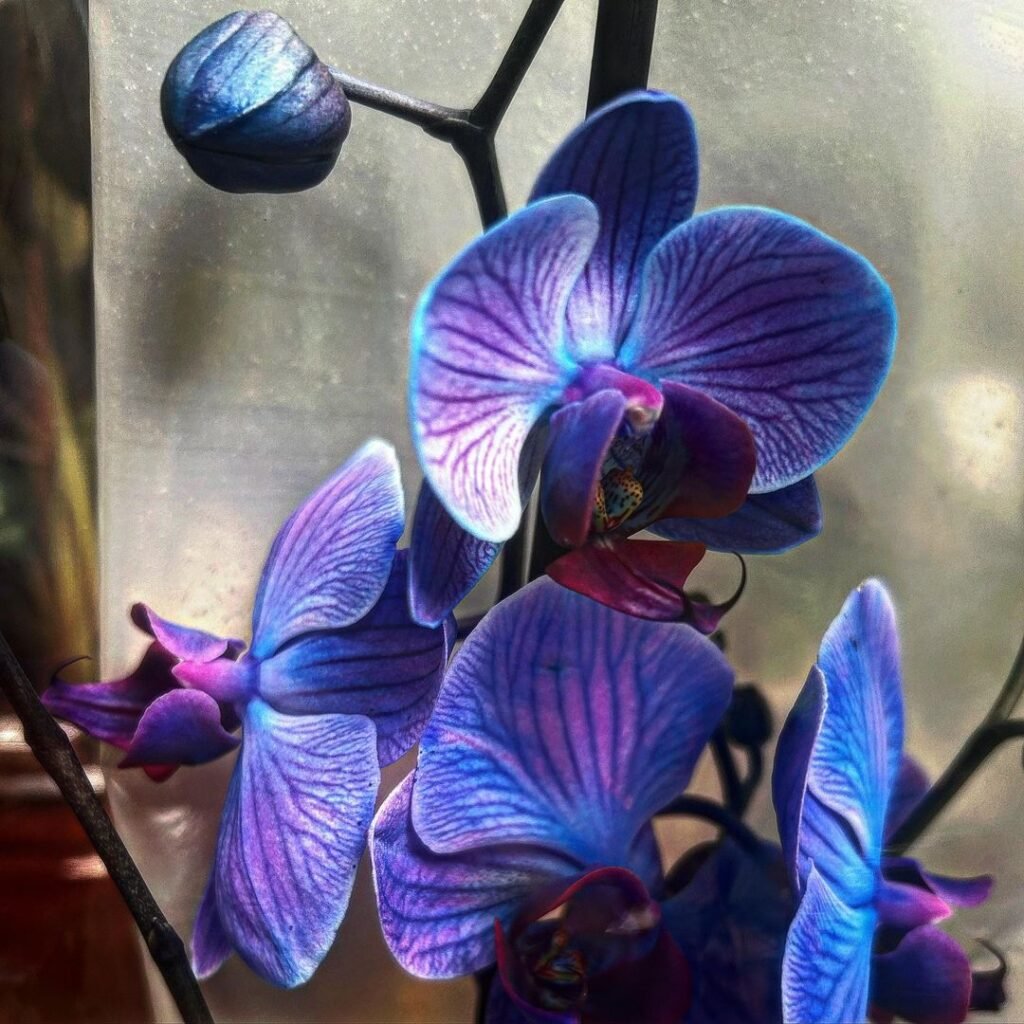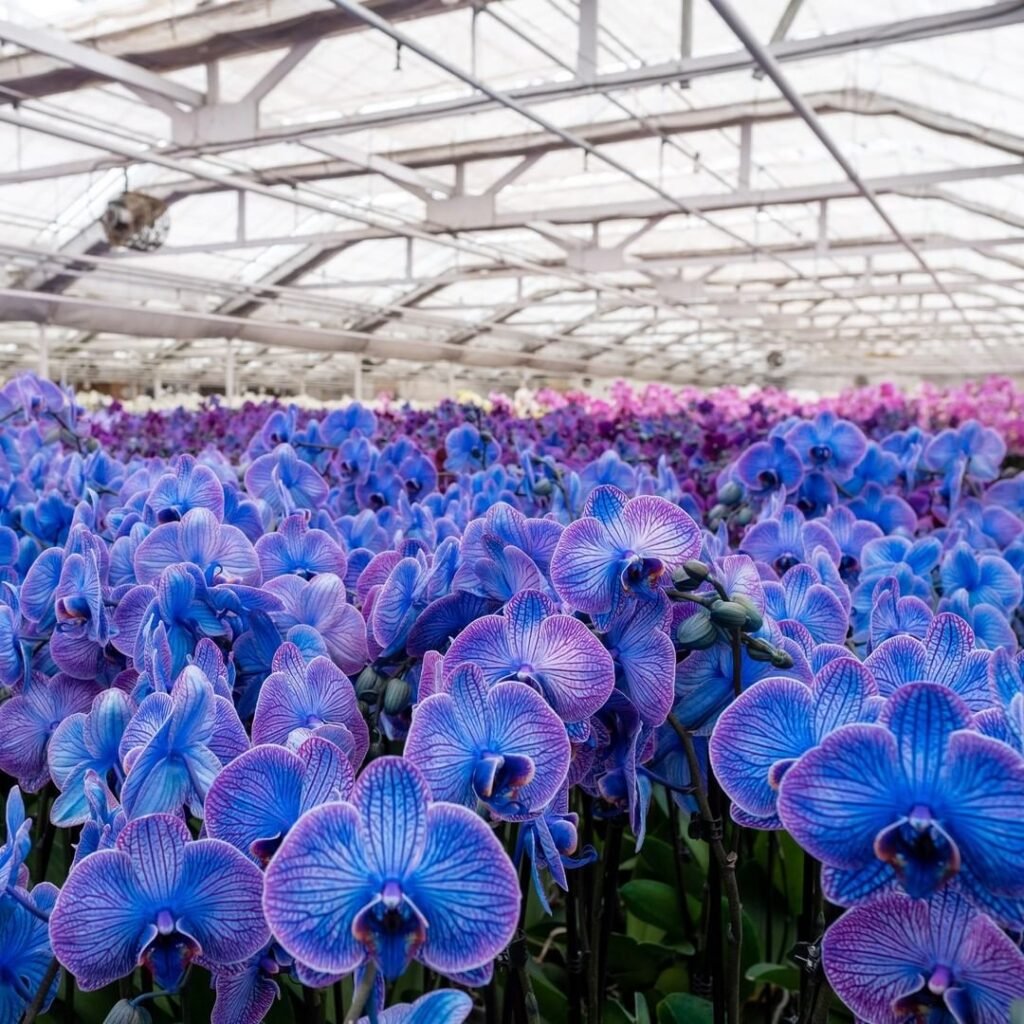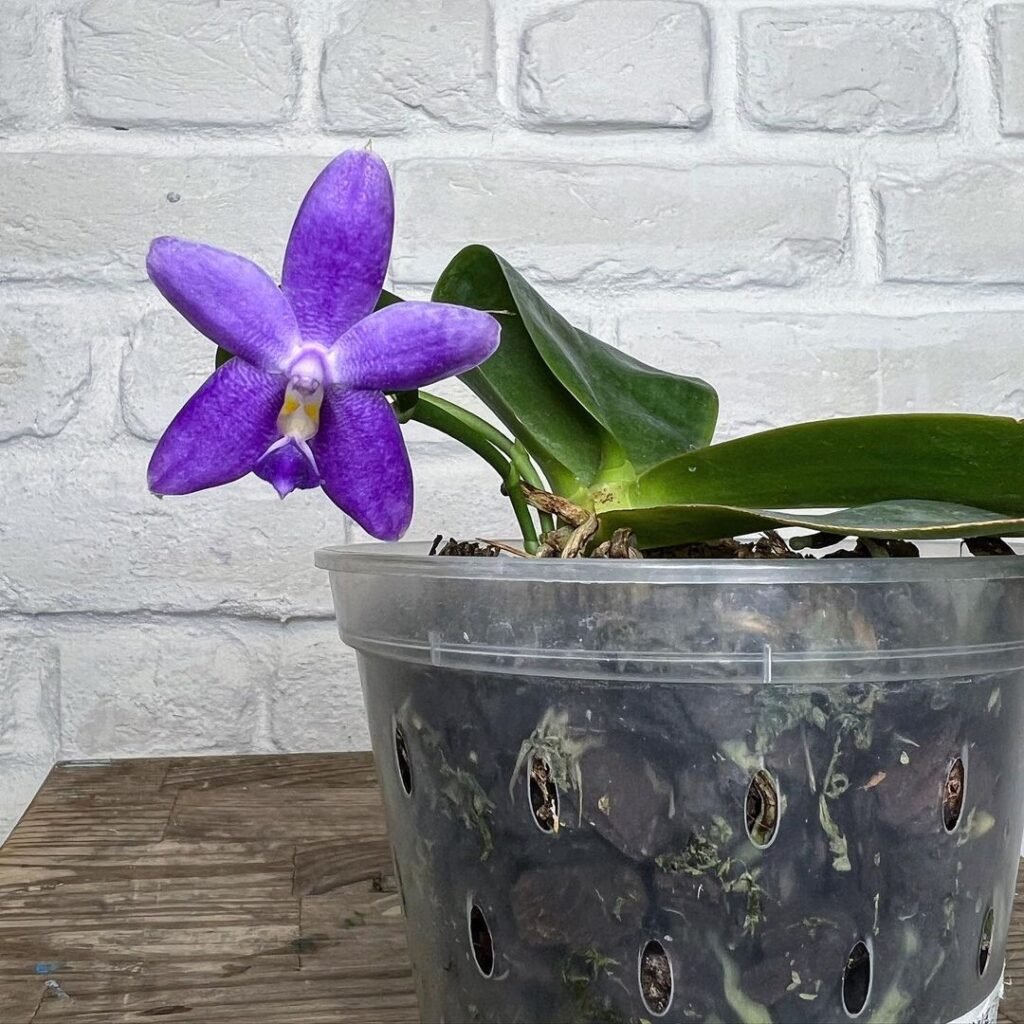Dive into the world of Blue orchids – both natural and artificial. Discover the truth about these stunning flowers, learn how to care for them, and troubleshoot common issues.
If you’re a fan of orchids, you’ve probably come across the captivating blue variety. These striking flowers seem to come straight out of a fantasy world with their mesmerizing hues. But are blue orchids real? And if so, how do you grow and care for them?

In this comprehensive guide, we’ll dive into the world of blue orchids – both natural and artificial. We’ll explore the science behind their unique coloration, uncover the truth about dyed orchids, and provide expert tips on cultivating these gorgeous blooms. Whether you’re a seasoned orchid enthusiast or simply fascinated by their otherworldly appearance, this article has all the information you need.
Are Blue Orchids Real?

The short answer is yes, blue orchids do exist in nature. However, they are extremely rare and difficult to find. The vast majority of “blue” orchids you see for sale are not naturally occurring, but rather the result of human intervention.
There are a few naturally blue orchid species, but they are quite uncommon:
Vanda coerulea: Also known as the “true blue orchid,” this species is native to parts of Asia, including northeast India, Myanmar, Thailand, and southern China. Its stunning azure blooms make it one of the rarest and most sought-after blue orchids.
Rossioglossum grande: This Central American orchid has a distinct bluish-purple hue to its flowers. It’s a challenging species to grow, making it another highly coveted blue variety.
Phalaenopsis pulcherrima: Also called the “beautiful phalaenopsis,” this Southeast Asian orchid can display various shades of blue, lavender, and purple. It’s a bit more common than the previous two, but still quite rare.
Beyond these naturally occurring blue orchids, the overwhelming majority of “blue” orchids you see in stores, flower shops, and online are actually artificially colored. Let’s take a closer look at how that process works.
Artificial Blue Orchids Explained

Since naturally blue orchids are so elusive, producers and florists have found a way to create the coveted blue hue through various dyeing and color-enhancing techniques. This allows them to meet the high consumer demand for these eye-catching flowers.
The most common method is to inject or soak the orchid stems in dye solutions, usually a synthetic blue pigment. This temporarily colors the petals and sepals, giving the appearance of a true blue orchid. Some growers may also use a coloring agent that binds to the plant’s natural pigments to achieve the blue shade.
Another technique is to genetically modify orchids to express blue pigments. Scientists have been working on developing truly blue orchids through advanced biotechnology, but these are still quite rare and expensive. The Mokara blue orchid is one of the few commercially available examples of a genetically engineered blue orchid.
It’s important to note that dyed or color-enhanced orchids are not necessarily inferior to their natural counterparts. They are simply a practical solution to satisfy the high market demand for these striking flowers. However, it’s always good to be an informed consumer and understand what you’re buying.
The Advantages and Disadvantages of Artificial Blue Orchids

Pros
Readily available and more affordable than rare natural blue orchids
Allow for a wider variety of blue shades and tones
Can be customized to match specific color schemes or decor
Provide an option for those unable to grow rare natural species
Cons
The blue coloration is temporary and will fade over time as the orchid grows
The dyes and chemicals used may be harmful to the plant’s health in the long run
Some people prefer the authenticity and uniqueness of naturally blue orchids
Dyed orchids are sometimes marketed as “natural” which can be misleading
When it comes to blue orchids, both natural and artificial varieties have their place. The key is to understand the differences and make an informed choice that aligns with your preferences and budget.
How to Grow and Care for Natural Blue Orchids
If you’re lucky enough to get your hands on a rare, naturally blue orchid, you’ll want to provide the best possible care to keep it thriving. Here are some tips:
Light Requirements

Blue orchids, like most orchid species, require bright, indirect light. Aim for at least 4-6 hours of sunlight per day, either near a sunny window or under artificial grow lights. Avoid direct sunlight, as it can scorch the delicate flowers.
Temperature and Humidity

These tropical plants thrive in warm, humid conditions. The ideal temperature range is 65-85°F during the day and 55-65°F at night. Maintain humidity levels between 50-80% to replicate their natural rainforest habitat.
Watering and Potting

Blue orchids are epiphytes, meaning they grow on trees or other supports in the wild, not in soil. In your home, plant them in a well-draining potting mix made for orchids, such as a bark-based medium. Water them when the potting mix is almost completely dry, taking care not to let the roots sit in water, which can lead to rot.
Fertilizing

Feed your blue orchid with a balanced, diluted liquid fertilizer every two weeks during the growing season (spring and summer). Reduce fertilizing in the fall and winter when growth slows down.
Repotting
Repot your blue orchid every 2-3 years in the spring, moving it to a slightly larger container. Be gentle when handling the roots, as they are delicate.
With the right growing conditions and care, your rare blue orchid should reward you with stunning, long-lasting blooms. Just remember that they can be quite finicky, so patience and attention to detail are key.
Caring for Dyed or Color-Enhanced Orchids

Dyed and color-enhanced blue orchids require a bit different care than their natural counterparts. Here’s what you need to know:
Light
These orchids generally need the same bright, indirect light as natural blue varieties. However, too much direct sun can cause the artificial coloration to fade more quickly.
Water and Humidity
Follow the same watering and humidity guidelines as for other orchid types. Avoid getting water on the flowers, as this can wash away the dye.
Fertilizer
Use a balanced, diluted liquid fertilizer every 2-3 weeks during the growing season. Avoid high-nitrogen fertilizers, as they may interfere with the color.
Pruning and Cleaning
Gently wipe down the leaves and flowers with a damp cloth to remove dust buildup. Prune off any dead or damaged parts of the plant, but avoid cutting stems with open blooms.
Longevity
Artificially colored blue orchids typically have a shorter lifespan than natural ones. The dye will gradually fade over time, usually within a few months to a year. Once the color is gone, the flowers will revert to their original white or light pink hue.
Keep in mind that the care requirements for dyed orchids may vary depending on the specific dyeing method used. Always follow the instructions provided by the grower or seller.
Troubleshooting Common Blue Orchid Issues
Whether you have a natural or artificial blue orchid, you may encounter some common problems. Here’s how to address them:
Fading Color
As mentioned, the blue color of dyed orchids will eventually fade over time. For naturally blue orchids, the color may also become less vibrant if the plant is not receiving enough light or proper care.
Solution: For dyed orchids, enjoy the beautiful blue blooms while they last. For natural blue orchids, ensure they are getting enough bright, indirect light and adjust other care factors as needed.
Yellowing or Wilting Leaves
This can be a sign of overwatering, underwatering, or nutrient deficiencies.
Solution: Check the soil moisture and adjust your watering schedule accordingly. Also, make sure the plant is getting enough fertilizer during the growing season.
Pests
Orchids, including blue varieties, can be susceptible to common houseplant pests like mealybugs, scale insects, and spider mites.
Solution: Regularly inspect your orchid for signs of pest infestations and treat promptly with an insecticidal soap or neem oil solution.
Fungal Diseases
Improper watering, poor air circulation, or damage to the plant can lead to fungal issues like root rot or leaf spots.
Solution: Ensure proper drainage, maintain good air flow around the plant, and avoid getting water on the leaves. Treat any fungal problems with a fungicide as soon as they’re detected.
By staying vigilant and addressing issues quickly, you can keep your blue orchids, natural or artificial, looking their best for as long as possible.
The Bottom Line on Blue Orchids
Blue orchids, whether naturally occurring or artificially colored, are truly captivating flowers that can add a touch of magic to any space. While naturally blue orchids are rare and challenging to grow, dyed and color-enhanced varieties provide a more accessible option for orchid enthusiasts.
Whichever type you choose, be an informed consumer and understand the differences in longevity, care requirements, and authenticity. With the right growing conditions and a little TLC, you can enjoy the mesmerizing beauty of blue orchids in your home for many years to come.
Pingback: From Patio to Plate: The Best Vegetables to Grow in ...
Pingback: 13 Lovely Baby Blue Flowers to Grow in Your Garden -
Pingback: Explore 20 Fascinating Flowers Beginning with F -
Pingback: 13 Purple Orchids Varieties For Your Gardens
Pingback: Discover 18 Stunning Russian Flowers: A Visual Delight -
Pingback: 17 Beautiful Flowers That Start With B Gardeners School
Pingback: The Charm of Forget-Me-Not Flowers: A Gardener’s Guide
Pingback: Floss Flower Planting and Growing Tips for Beginners
Pingback: Blue Orchid Care 101: Water, Light & Growing Tips -
Pingback: Fixing Wrinkled Orchid Leaves : How to Help Your Orchid